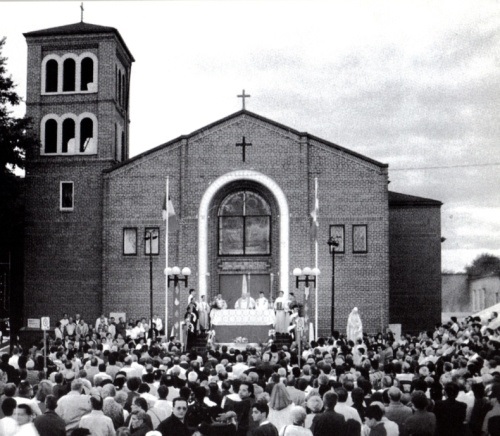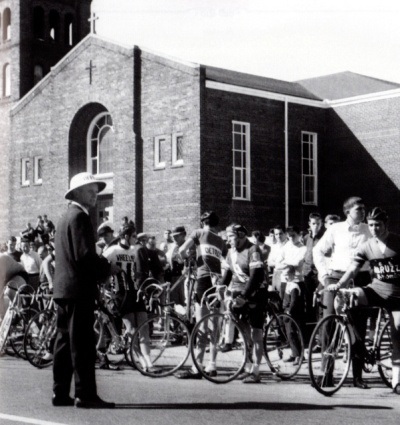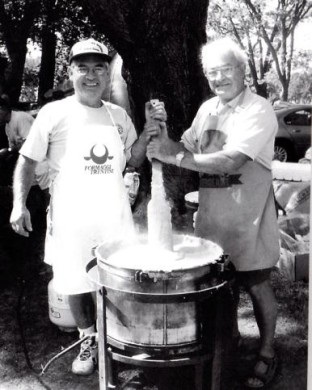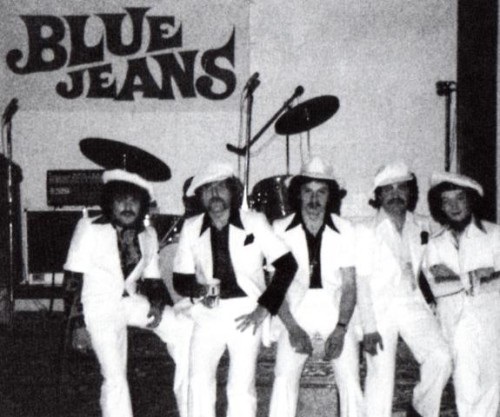Alanna Bolotta for Transformations Canada – For many Italians, immigrating to Canada meant more than acclimatizing to a new environment. It involved finding ways to make this strange new country their home. The book Impronte: Italian Imprints in Windsor, provides a rich account of how new Italian Canadians adjusted to their surroundings by finding ways to keep their traditions not only alive, but flourishing.
Matteo Palmieri was the first known Italian in Windsor. He was born in Napoli and fought alongside Giuseppe Garibaldi to liberate and unify Italy. After a failed battle, he was forced to flee his homeland and eventually arrived in Windsor, Ontario in the 1860’s. Palmieri moved back and forth between Detroit and Windsor, eventually settling in Windsor where he died in 1916. He is credited with founding the Italian Benevolent Society, a group responsible for assisting new immigrants (Temelini, 1985).
The first wave of Italian immigration to Canada occurred between 1901 and 1911. By this time, 95 Italians could call Windsor their home.
Seventy-five percent of the Italians in Windsor today arrived between 1940 and 1970, with the population almost doubling each decade (Temelini, 1985).
As if moving to a new country wasn’t challenging enough, in 1940, shortly after Mussolini declared war on England, many Italians in Windsor had to contend with their new identities as ‘enemy aliens.’ Italians were photographed and fingerprinted, often fired from their jobs and in some cases interned in camps. Windsor’s mayor at the time, Arthur J. Reaume, reminded citizens of the many contributions of Italians, stating: “Years past Windsor was lucky to have those Italians. They dug out sewers and did other hard labour. Today they have lost their homes and their jobs and are persecuted by everybody.” (Temelini, 1986)
After the war, immigration from Italy experienced rapid growth. Several reasons explain why all these Italians were rushing into the small town, across the river from Detroit. Windsor provided proximity to the United States, and to the booming auto industry. In addition, many Italians had family, economic or other ties to the Detroit area (Impronte). As the United States increasingly restricted immigration, Canada became the next best option and Windsor was as close as many immigrants could get to their American relatives.
The rapidly increasing number of Italians in Windsor led to the formation of an active community that was desperate to connect their new lives to the nostalgic memories of ‘back home’ and to continue traditional practices and celebrations. Through their shared experiences, these Italian Canadians were able to use their religion, the formation of social clubs and an appreciation for music and sport to make a lasting contribution, to Windsor’s cultural development.
Today, Erie Street East is known as the “Little Italy” of downtown Windsor. However, this area was not always associated with Italians.
In 1938, Monsignor Constantino De Santis (then Father De Santis) arrived in Windsor to facilitate the construction of a new church. He enlisted the help of many Italians in the community who used their skill set and the familiar practices of the old country, to get the project off the ground. Community members provided labour and raised funds through spaghetti dinners, dances and bingo nights (Impronte).
Father De Santis said the first Mass at St. Angela Merici Church on Christmas Day of 1939. From this point on, the church on Erie Street East became the focal point of the Italian community, leading to an increase in Italian homes and businesses in the area. The church community spent years growing, developing a youth center and forming many Italian Catholic associations (Impronte).

Members of the Ciociaro Club celebrate the traditional bread and corn sagra (harvest festival), in 1999. Source: Courtesy of the Ciociaro Club (in Impronte). 
An outdoor Mass celebrated at St. Angela Merici Church, circa 1984. Source: Courtesy of St. Angela Merici Church.
The Windsor community has spawned a number of Italo-centric clubs and associations over the years. One such organization is the Giovanni Caboto Club, which was established in 1924 as the Border Cities Italian Club. The goal of the club was to act as a meeting place, to assist new immigrants and to maintain Italian traditions. The club organized events such as picnics, dances, and raffles and also formed its own band. By 1947, the club had established a bowling team and a youth club.
In 1950, the Italian community of Windsor came together as they had in the building of St. Angela’s Church. Once again individuals contributed their time and skills to build a new home for the Caboto Club. By the 1960’s the club was thriving, throwing hugely successful Saturday night dances and publishing its own periodical, The Caboto News. In the decades that followed, the club successfully expanded its social events. Several other clubs were also formed to celebrate and preserve regional traditions (Impronte). The following photos demonstrate two such events.
The Italians who settled in Windsor brought many sports and activities with them from the old country. Common pastimes such as bocce, soccer, tug-of-war, pole climbing and cycling became a part of life in the Windsor area.
In 1958, the Erie Street Bicycle Race, also known as the ‘Tour di Via Italia’, began a tradition that continues to the present day. Each year, local, national and international cyclists travel to Windsor for their chance to dominate the 1.7 km course.
The importance of sports in the community provided an environment where successful athletes flourished in soccer, football, hockey, baseball, boxing and basketball. One notable example is Gino Fracas. He was born in Windsor to parents from Pordenone (Friuli-Venezia- Giulia). He played for the Edmonton Eskimos in the Canadian Football League from 1955 to 1962, winning two Grey Cups. He went on to an equally successful career coaching football and wrestling and received the Caboto Club Italian of the Year Award in 1993 (Impronte).
The Italian love for classical, contemporary and folk music remains an integral part of community life in Windsor. With the Caboto Club band and a myriad of dances and social functions, many Italian musicians called Windsor home. One such artist is Luigi (Gino) Mazzalonga, who immigrated to Canada in 1955 from Campobasso, Molise. He lived in an Italian neighbourhood in Montreal until 1972, when he moved to Windsor. That same year his new band, Gino and the Potens, performed regularly at the Caboto Club dances. He was a part of several other music groups such as I Vagabondi (1974), The Blue Jeans (1976) and Gino’s Market Band (1980).

Cyclists are lined up in front of St. Angela Church for the start of the Tour di Via Italia, in 1964. Source: Courtesy of St. Angela Merici Church. 
Members prepare the traditional polenta (corn meal) at the Circolo Trentini annual picnic, in 2003. Source: Courtesy of Mary Jo Schaffer.
In 1972, Mazzalonga also started the first outdoor Italian festival on Erie Street, to promote music and culture. After 40 years in the business, Mazzalonga offers this advice to young musicians: “Always play for your audience; give people exactly what they want; work hard as whatever you put in, you will receive…. Do not play just for money but because you love entertaining.” (Impronte)
The local music scene often includes musicians performing in several bands. Some of these bands perform in Detroit and other parts of the United States where Italians can be found. For example, The Blue Jeans (consisting of Peter Lucente, Gino Mazzalonga, Domenic Politi, Vito Flores and Joe Trocchi) still perform together. Mazzalonga also performs with Gino’s Market Band, while Lucente performs regularly in Erie Street bars and street festivals and has won awards for both songwriting and performing. He is also a master tailor and designer. Lucente believes, “The Italian habit of doing everything that you do with passion has served me well and it continues to serve our Italian community in Windsor very well.”

Through these activities, organizations and events, the Italian community in Windsor defined itself as an integral part of the cityscape. Through the willingness to keep their traditions alive, the Italian community was able to thrive and become a valued part of the city’s character. By 2001, over 30 000 residents of Windsor listed their origin as Italian.
Most importantly, the individuals that emerged from this community were able to give back to the country that had given them, or their ancestors, opportunity. The strength of Canada is its invitation to celebrate cultural differences and traditions, while forging a Canadian identity that integrates the best that people have to offer. Being in Canada has changed both the Italians living in communities like Windsor and the greater society that welcomed them.
Individuals such as Sandra Pupatello, Anna Maria Tremonti and Anthony Peter Toldo have emerged from the Italian community of Windsor to contribute on the national stage. The three short profiles that follow serve as reminders of how deeply the Italian Canadian spirit is steeped in hard work and passionate community service.

